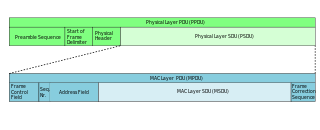In Telecommunication and Computer networking, time-driven switching (TDS) is a node by node time variant implementation of Circuit switching, where the propagating datagram is shorter in space than the distance between source and destination. With TDS it is no longer necessary to own a complete circuit between source and destination, but only the fraction of circuit where the propagating datagram is temporarily located. TDS adds flexibility and capacity to Circuit Switched networks but requires precise synchronization among nodes and propagating datagrams.

Telecommunication is the transmission of signs, signals, messages, words, writings, images and sounds or information of any nature by wire, radio, optical or other electromagnetic systems. Telecommunication occurs when the exchange of information between communication participants includes the use of technology. It is transmitted either electrically over physical media, such as cables, or via electromagnetic radiation. Such transmission paths are often divided into communication channels which afford the advantages of multiplexing. Since the Latin term communicatio is considered the social process of information exchange, the term telecommunications is often used in its plural form because it involves many different technologies.

Circuit switching is a method of implementing a telecommunications network in which two network nodes establish a dedicated communications channel (circuit) through the network before the nodes may communicate. The circuit guarantees the full bandwidth of the channel and remains connected for the duration of the communication session. The circuit functions as if the nodes were physically connected as with an electrical circuit.
Datagrams are formatted according to schedules that depend on Quality of service and availability of switching nodes and physical links. Respect to Circuit switching the added time dimension introduces additional complexity to network management. Like Circuit switching, TDS operates without buffers and header processing according to the pipeline forwarding principle; therefore an all optical implementation with Optical fibers and Optical Switches is possible with low cost. The TDS concept itself pervades and is applicable with advantage to existing data switching technologies, including Packet switching, where packets, or sets of packets become the datagrams that are routed through the network.
Quality of service (QoS) is the description or measurement of the overall performance of a service, such as a telephony or computer network or a cloud computing service, particularly the performance seen by the users of the network. To quantitatively measure quality of service, several related aspects of the network service are often considered, such as packet loss, bit rate, throughput, transmission delay, availability, jitter, etc.
Pipeline forwarding (PF) applies to packet forwarding in computer networks the basic concept of pipelining, which has been widely and successfully used in computing — specifically, in the architecture of all major central processing units (CPUs) — and manufacturing — specifically in assembly lines of various industries starting from automotive to many others. Pipelining is known to be optimal independent of the specific instantiation. In particular, PF is optimal from various points of view:
- High efficiency in utilization of network resources, which enables accommodating a larger amount of traffic on the network, thus lowering operation cost and being the foundation for accommodating the exponential growth of modern networks.
- Low implementation complexity, which enables the realization of larger and more powerful networking systems at low cost, thus offering further support to network growth.
- High scalability, which is an immediate consequence of the above two features.
- Deterministic and predictable operation with minimum delay and no packet loss even under full load condition, which is key in supporting the demanding requirements of the new and valuable services that are being deployed, or envisioned to be deployed, on modern networks, such as telephony, videoconferencing, virtual presence, video on demand, distributed gaming.

Packet switching is a method of grouping data that is transmitted over a digital network into packets. Packets are made of a header and a payload. Data in the header are used by networking hardware to direct the packet to its destination where the payload is extracted and used by application software. Packet switching is the primary basis for data communications in computer networks worldwide.
TDS has been invented in 2002 by Prof. Mario Baldi and prof. Yoram Ofek of Synchrodyne Networks, Inc. that is the assignee of several patents issued by both the United States Patent and Trademark Office and the European Patent Office.
Yoram Ofek was a Marie Curie Chair and full professor in the Information Engineering and Computer Science Department at the University of Trento, Italy. He was the inventor of 45 US and European patents and published more than 120 journal and conference papers. He invented several novel architectures for networking, computing and storage. He was elected IEEE Fellow in 2006 for his contributions to switching, scheduling and synchronization in data networks.

The United States Patent and Trademark Office (USPTO) is an agency in the U.S. Department of Commerce that issues patents to inventors and businesses for their inventions, and trademark registration for product and intellectual property identification.

The European Patent Office (EPO) is one of the two organs of the European Patent Organisation (EPOrg), the other being the Administrative Council. The EPO acts as executive body for the Organisation while the Administrative Council acts as its supervisory body as well as, to a limited extent, its legislative body. The actual legislative power to revise the European Patent Convention lies with the Contracting States themselves when meeting at a Conference of the Contracting States.



